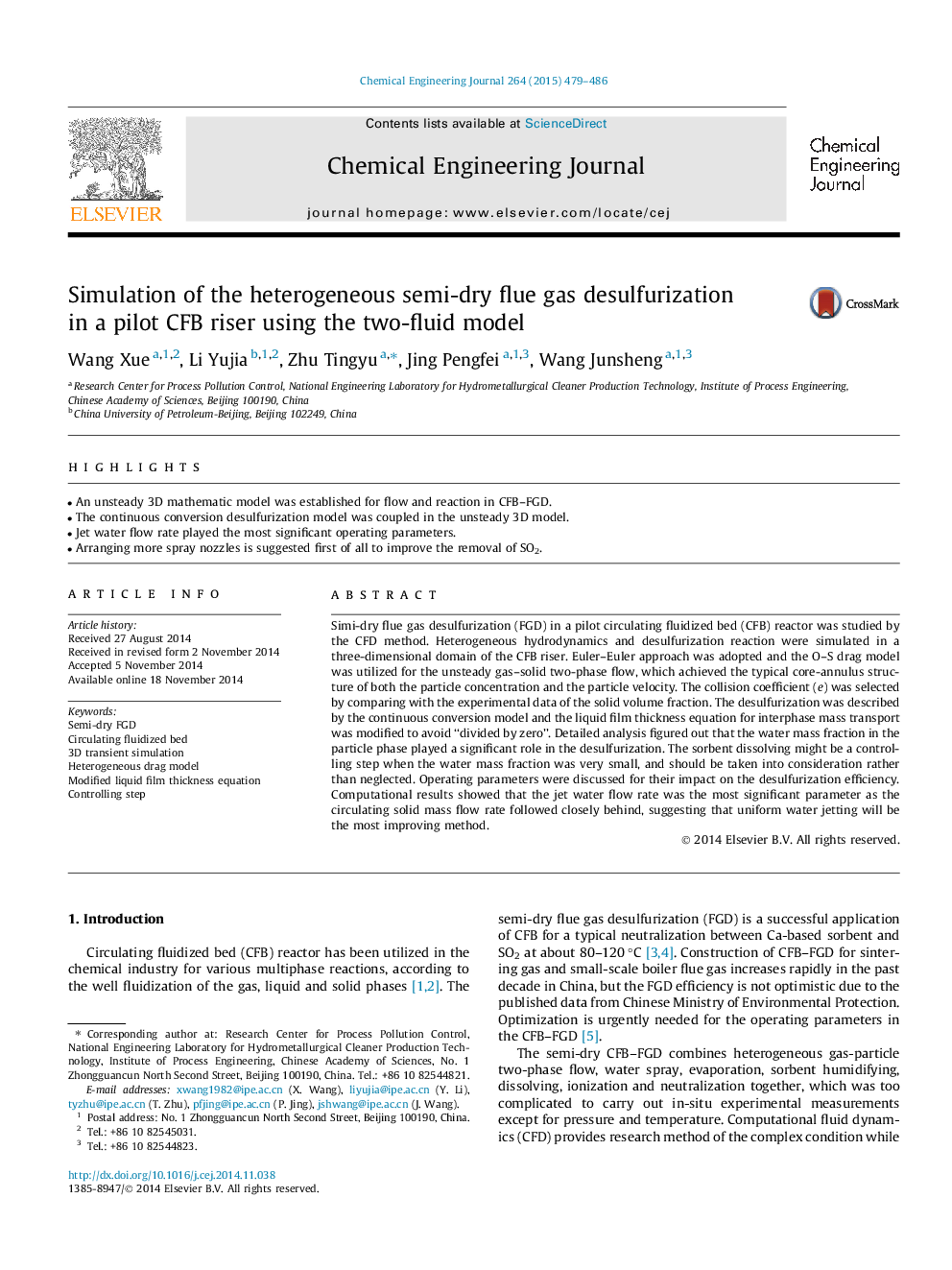| Article ID | Journal | Published Year | Pages | File Type |
|---|---|---|---|---|
| 146900 | Chemical Engineering Journal | 2015 | 8 Pages |
•An unsteady 3D mathematic model was established for flow and reaction in CFB–FGD.•The continuous conversion desulfurization model was coupled in the unsteady 3D model.•Jet water flow rate played the most significant operating parameters.•Arranging more spray nozzles is suggested first of all to improve the removal of SO2.
Simi-dry flue gas desulfurization (FGD) in a pilot circulating fluidized bed (CFB) reactor was studied by the CFD method. Heterogeneous hydrodynamics and desulfurization reaction were simulated in a three-dimensional domain of the CFB riser. Euler–Euler approach was adopted and the O–S drag model was utilized for the unsteady gas–solid two-phase flow, which achieved the typical core-annulus structure of both the particle concentration and the particle velocity. The collision coefficient (e) was selected by comparing with the experimental data of the solid volume fraction. The desulfurization was described by the continuous conversion model and the liquid film thickness equation for interphase mass transport was modified to avoid “divided by zero”. Detailed analysis figured out that the water mass fraction in the particle phase played a significant role in the desulfurization. The sorbent dissolving might be a controlling step when the water mass fraction was very small, and should be taken into consideration rather than neglected. Operating parameters were discussed for their impact on the desulfurization efficiency. Computational results showed that the jet water flow rate was the most significant parameter as the circulating solid mass flow rate followed closely behind, suggesting that uniform water jetting will be the most improving method.
